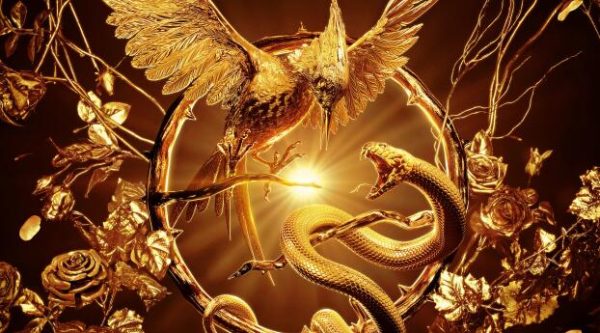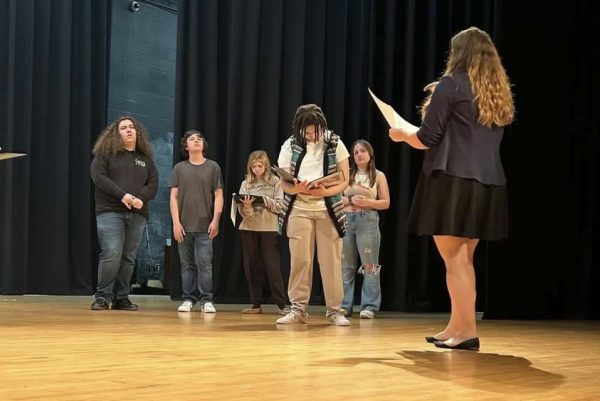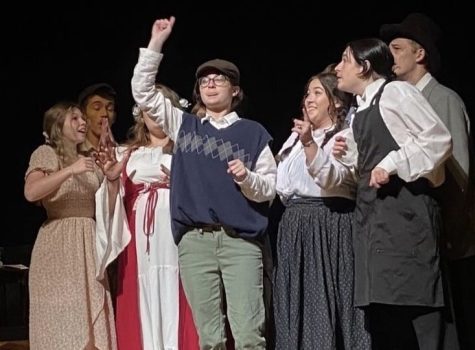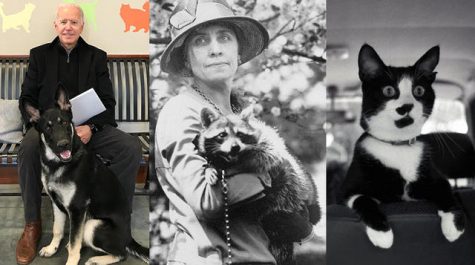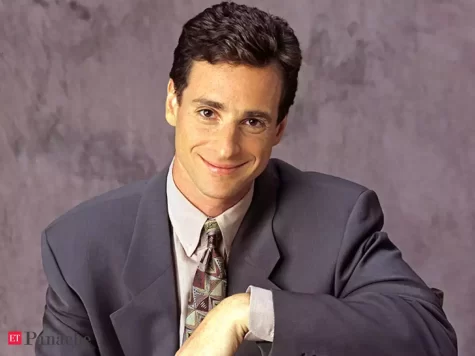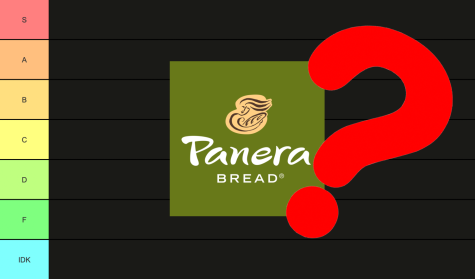Trick-Or-Treat All About It
Halloween in America began when the Scottish and Irish brought their celebrations over to America in mid-1800’s. It became a commercialized holiday in the 1900’s when multiple new traditions began making the holiday a profitable market. Throughout the month of October, life alters with the weather as spooky season rolls into town. The evolution of Halloween in America has resulted from many traditions of the original versions of the holiday.
In Ireland and Scotland, many people would carve faces into smaller vegetables like turnips and potatoes to ward off evil spirits. Today, Americans practice a similar tradition when carving pumpkins to make Jack-O-Lanterns. Obviously, potatoes and pumpkins are different, and the American tradition has become normalized so we don’t even realize the source or original meaning of the activity. Many children and families get together a week or two before Halloween and partake in pumpkin carving, creating scary, friendly, and funny faces or pictures in the pumpkins. Some people have become masters, showing off their artistic skills with intricate designs carved into pumpkins.
On Halloween night thousands of children dress up in costumes and go around their neighborhoods asking strangers for candy. What an ironic situation when kids are told entire lives to NOT take candy from strangers. Why do we practice this tradition and how did it start? The Smithsonian reveals that the Celts started dressing up as evil spirits as a means to protect themselves and blend in with the real evil spirits that they believed roamed the earth as we transitioned from one year to the next. As Catholics began adopting the Halloween traditions in their celebration of “All Saint’s Day,” the dressing up expanded farther than evil spirits and started incorporating costumes of Saints and Angels. When America adopted these traditions, and children became the prime target of Halloween, costumes extended to princesses, movie and book characters, mythical creatures, and are only growing in the wide varieties of endless costume ideas. Children knock on the doors of strangers repeating “trick-or-treat” to each answer, hoping for a hand full of candy from a series of strangers. Giving out candy has always been the focal point of Halloween in America, and the most exciting part of the holiday for children. The night before All Saint’s Day, poor Christian families would go around and pray for other families’ passed loved ones in exchange for food. In recognition of this old tradition, Americans started handing out their own sweet treats, which brought economic benefits from the massive amount of candy and decoration sales. According to The Kitchen, candy was also Parents’ idea for an alternative to bad behaviors. Copious amounts of vandalism were occurring around this time of the year, so parents put together the plan to hand out candy to distract the children from their ruthless actions. When candy companies figured out the economic benefits that were being brought to the table by this holiday, marketing strategies for Halloween themed candy were now in place, and the trick-or-treating tradition has stuck ever since.
Americans become weirdly obsessed with Halloween, and deck their houses out in spooky decorations anywhere from playful to genuinely frightening. Some mix autumn ambiance with subtle Halloween decorations to present a more playful and welcoming atmosphere for the trick-or-treaters, while others go for a darker scene. People who take this path may put decorations out that resemble actual dismembered body parts, while those that are going for more lighthearted decorations may just put up some spider webs and a skeleton alongside their jack-o-lanterns. According to Halloween Express, those that appeal to the gorier side of Halloween put up decorations that “send shivers down most anyone’s spine,” especially the annual Haunted Houses that so many teenagers are drawn to.
Halloween gives so many opportunities for people to voluntarily partake in being terrified. Even companies participate in the holiday, hosting events such as Fright Fest at Six Flags. Around the end of September, Haunted Houses pop up in the same locations every year, and many people actually look forward to paying money so that someone will jump out and scare them. The infatuation with haunted houses continues to grow year by year, and as The Science Explorer explains, we enjoy the scare because “deep down inside we know that we’re not in a life-threatening situation.” They discuss how triggering the fight-or-flight response in our body releases a rush of adrenaline, endorphins, and dopamine, which our bodies enjoy when we are aware that nothing bad is going to happen to us.
Another Halloween tradition practiced by many Americans is the marathons and binge watching of Halloween movies. TV networks stream Halloween movies for days on end with no break. There’s always the classics just like any other movie genre, but for this holiday, they could include: Hocus Pocus, Halloween, Halloweentown (my personal fav), The Nightmare Before Christmas, and many more. The month of October gives us a chance to claim Halloween as a season and an excuse to watch these movies and celebrate this holiday for more than just a day. Friends get together and watch multiple Halloween movies in a sitting, and some even think it is a cute date idea. There are also way too many good movies to watch that won’t fit into just one night, so we need a whole month to fit in all the classics along with the other typical traditions we practice.
Halloween is such an exciting time of the year, and not just for children, but for young adults too. So why is it that the spooky vibe that October brings makes us feel thrilled and has us ready for Halloween well before it even gets here? Besides the psychological effects of an adrenaline rush when being spooked, Halloween provides an opportunity for EVERYONE to show off their creativity or present it in some way, whether that be decorating their house, carving an eerie pumpkin, or dressing up in the most creative costume you can come up with. We associate the trick-or-treating and other traditions of Halloween with young children, but it really provides everyone with the chance to show off their art. Extending the celebration across the whole month of October allows us to feel a sense of purpose for more than one night, and prolong the excitement that comes along with the evolved traditions that America follows every year. According to Halloween Express, scary is “the one thing you can always count on,” when Halloween comes around.





